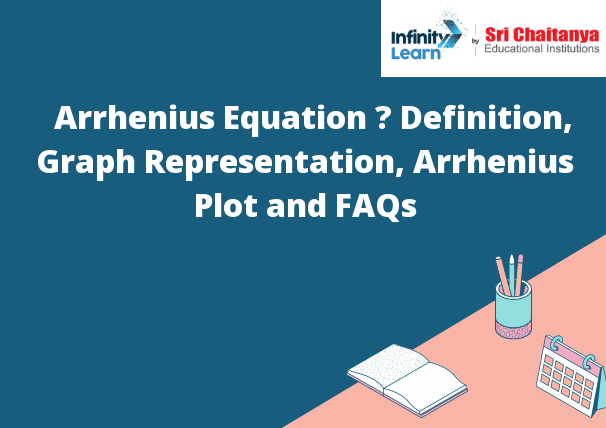Table of Contents
What is the Arrhenius Equation?
The Arrhenius equation states that the rate of a chemical reaction is proportional to the frequency of collisions between the reacting molecules .The Arrhenius equation is a mathematical equation that helps to predict the rate at which a chemical reaction will take place. The equation is named after the Swedish chemist Svante Arrhenius, who developed it in the late 1800s. The equation takes into account the temperature of a reaction and the activation energy of the reaction. The activation energy is the amount of energy that is required for a reaction to take place. The equation can be used to predict how a reaction will change as the temperature changes. The equation is written as:
Rate = k[A]x[B]y
where k is the rate constant, [A] and [B] are the concentrations of the reactants, and x and y are the reaction orders.

Arrhenius Equation Graph Representation
The Arrhenius equation graph representation is used to show how the activation energy affects the reaction rate. The y-axis shows the reaction rate, while the x-axis shows the activation energy. The line on the graph shows how the reaction rate changes as the activation energy changes.
The Arrhenius equation is a mathematical model that describes the rate of a chemical reaction as a function of temperature. The equation is:
A = A0e−Ea/RT
Where A is the reaction rate, A0 is the initial reaction rate, Ea is the activation energy, RT is the gas constant, and T is the temperature in Kelvin.
The Arrhenius equation can be graphed using a line graph. The x-axis represents the temperature in Kelvin, and the y-axis represents the reaction rate. The line will slope downwards as the activation energy increases, meaning that the reaction rate decreases as the temperature increases
Arrhenius Plot
An arrhenius plot is a graph that plots the temperature against the logarithm of the rate constant for a chemical reaction. The slope of the line on the plot is the activation energy for the reaction .The Arrhenius plot is a graph that plots the ln[k] versus 1/T. The ln[k] is the natural log of the rate constant, and 1/T is the inverse of the temperature. The slope of the Arrhenius plot is equal to the activation energy of the reaction.
Does Arrhenius Equation Account for the Catalysts?
- The Arrhenius equation is a mathematical formula used to describe the rate at which a chemical reaction takes place. The equation takes into account the temperature of the reaction and the activation energy of the reaction.
- Catalysts are substances that speed up chemical reactions without being consumed in the reaction. Catalysts typically lower the activation energy of a reaction, making it easier for the reactants to collide and form products. The Arrhenius equation does not specifically take into account the role of catalysts in reactions. However, the equation can be used to predict the rate of a reaction at different temperatures, and the activation energy of a reaction can be used to determine whether a catalyst is likely to be effective in speeding up a reaction.
Arrhenius Equation and Pre-Exponential Factor (A)
The Arrhenius equation is a mathematical formula that describes the relationship between the activation energy (E a ), the frequency factor (A), and the reaction rate. The equation is as follows:
r = A e-E a /RT
Where r is the reaction rate, A is the frequency factor, E a is the activation energy, and RT is the gas constant.
The pre-exponential factor (A) is a measure of the reactivity of a molecule and is determined by the geometry of the molecule and the strength of the bond.






